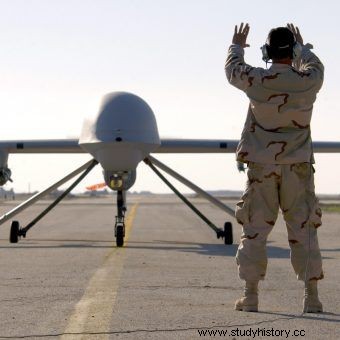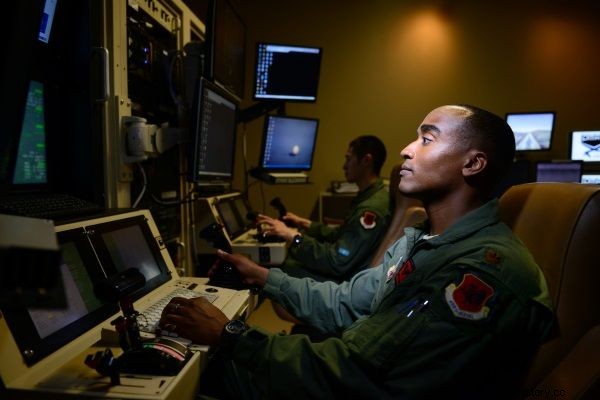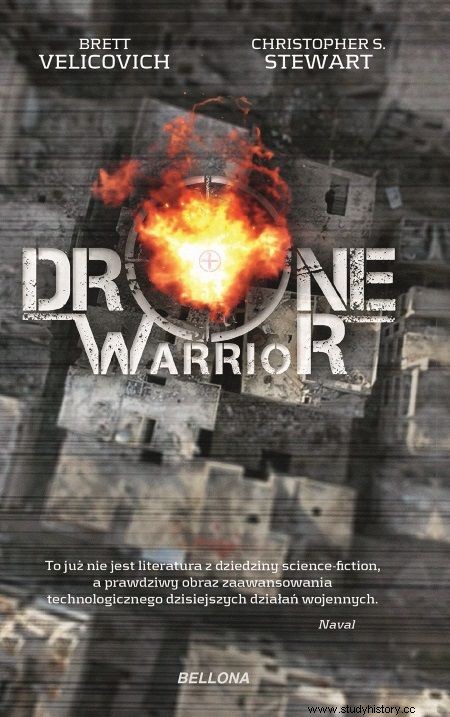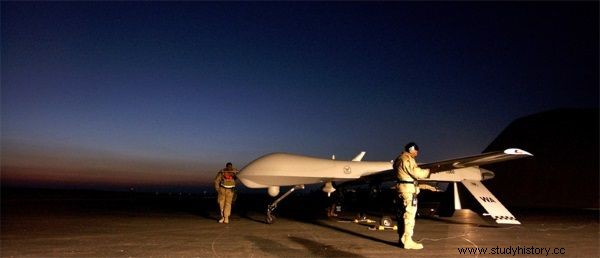You don't even need to be around to kill. What's more, you don't even have to be on the same continent. All you need is a joystick and an iron psyche to kill with a drone and to lead soldiers without being on the battlefield yourself. This is what modern warfare looks like.
A drone's career beyond being a flying toy is taking off at lightning speed. For example, members of Hizbullah as early as 2004 were sending small flying machines to Israeli territory for observation and data collection. Two years were enough for the group to find a new use for drones.

RQ-1 Predator in Iraq (photo:U.S. Air Force, Staff Sgt. Suzanne M. Jenkins, public domain license)
In 2006, they began carrying explosives and attacking Israeli targets. At the same time, they turned out to be much more effective (and cheaper!) Than the rocket fire used by Hezbollah so far. As Marcus Schulzke mentions in The Morality of Drone Warfare and the Politics of Regulation , also drug cartels use drones in their practice - devices carry drug parcels across the border, but at the moment there is no data on arming these machines.
However, drones have the greatest career in the military, primarily in the US armed forces. In the army of almost every country, the life of soldiers is at a premium. Therefore, commanders try at all costs to avoid exposing them to unnecessary risk, while continuing to attack the enemy. Drones allow, at least partially, to remove soldiers from the battlefield and conduct precise attacks, increasing the combat effectiveness of the armed forces.
The role of these machines and the scale of their use during the operations in Iraq and Afghanistan are mentioned, among others, by Colonel Ryszard Bartnik in his scientific work "Air force in the fight against rebels - selected problems".

A center where drone pilots control machines remotely (photo:Staff Sgt. Vernon Young, public domain license)
In his words, "unmanned aerial vehicles" (UAVs), that is drones, are the basic reconnaissance tool and in certain zones they are constantly kept in the air. According to the data presented by him, from June 2007 to February 2009 Predators (unmanned combat machines used by the US Army) were in the air for 250,000 hours.
The intoxicating sight of dead terrorists?
An example of such an impact was seen during his training by Brett Velicovich, the author of the book "Drone warior" who served in the US Special Forces :
The recording came from the camera mounted on the drone. The machine was recording an al-Qaeda training base located somewhere in the Middle East. Spartan conditions prevailed in the camp filled to the brim with armed terrorists. A group of fighters sat on the ground, listening to the instructor's words. Suddenly, the drone fired a Hellfire missile. In one second, the secret base and all its people disappeared from the face of the earth. The white exploding ball killed at least a hundred terrorists.

It was the first time that a man saw the effects of an attack with a BSP. Moments after the explosion, the machine's camera regained focus and showed a corpse lying on the ground. The author, who took a drag shortly after the 9/11 attacks, commented it excitedly: Up to this point, I didn't know what I wanted to do, but the sight of terrorists killed had dispelled my doubts. It was a job just right for me.
Like many other soldiers who fought with the help of drones, he gave up the sun. Instead, during his service, he almost constantly sat in a darkened room from which intelligence operations were directed and material obtained from the camera of the "bird" (as he called these machines) was analyzed. He stared at the monitors, tracking even the smallest details.
Velicovich himself was compiling intelligence material to find and display more terrorists. When the soldiers went on the action, they were in possession of the key information thanks to the drones. As emphasized by the author of "Drone Warriora" , this intelligence advantage during operations in a city full of traps was often decisive for the life or death of combatants.

IRAQI FREEDOM operation. The ground crew takes care of the drone (photo:U.S. Air Force, Staff Sgt. Jeremy T. Lock, public domain license)
From now on, they knew if there were gunmen lurking on the rooftops of nearby buildings, and how many people they might encounter upon crossing the threshold. Drones became an extra pair of eyes, which in Sadr City, where every day there was an exchange of fire in the streets, was an invaluable help. I cannot judge the impact of the change described above, but the raids we carried out were increasingly successful. The number of American soldiers killed has also decreased.
The face of the war has changed dramatically since the times of General Patton and his colleagues fighting on the fronts of World War II. As Ian G.R. Shaw, author of Predator Empire. Drone Warfare and Full Spetrum Dominance ", the US armed forces occupy the leading position in remote control killing.
Drones have become the focal point of the country's national security strategy, which has evolved from counter-terrorism in cities to actions from the sky targeting terrorists directly. Shaw emphasizes that the US military is replacing more and more people with computers. In order to work effectively, it is enough to have appropriate algorithms detecting potential threats, patrolling machines, drones and special forces. And it's scary to think what the war will look like in the next decade.
Information sources:
- Bartnik R., Air force fighting the rebels - selected problems [in:] "Anti-rebelian actions in operations. Materials from the scientific seminar edited by Wojciech Więcek ”, Warsaw 2011.
- Martin G, Steuter E., The Political Economy of America's New Way of War , Lanham-Boulder-New York-London 2017.
- Schulzke M., The Morality of Drone Warfare and the Politics of Regulation , Palgrave Macmillan 2017.
- Shaw I. G. R., Predator Empire. Drone Warfare and Full Spectrum Dominance , Minneapolis-London 2016.
- Velicovich B., Drone Warior , Bellona 2018.
